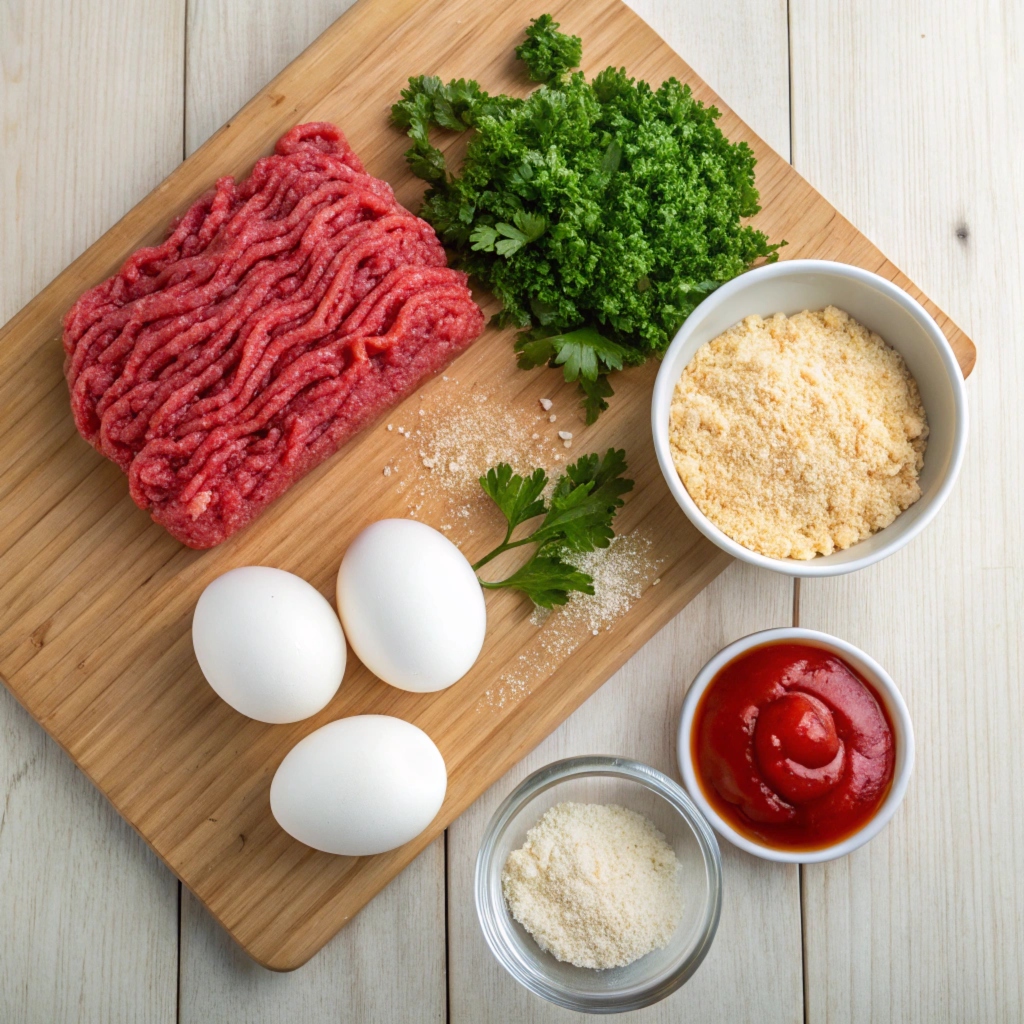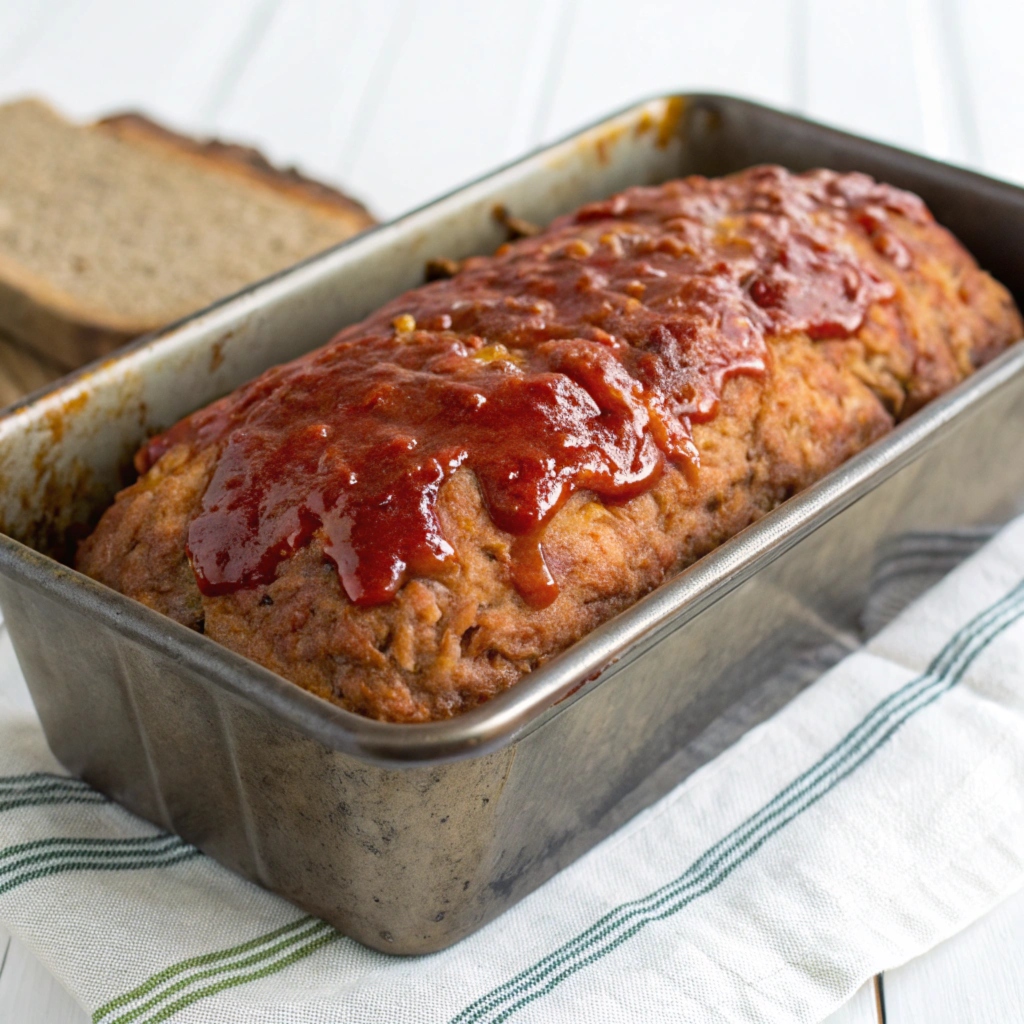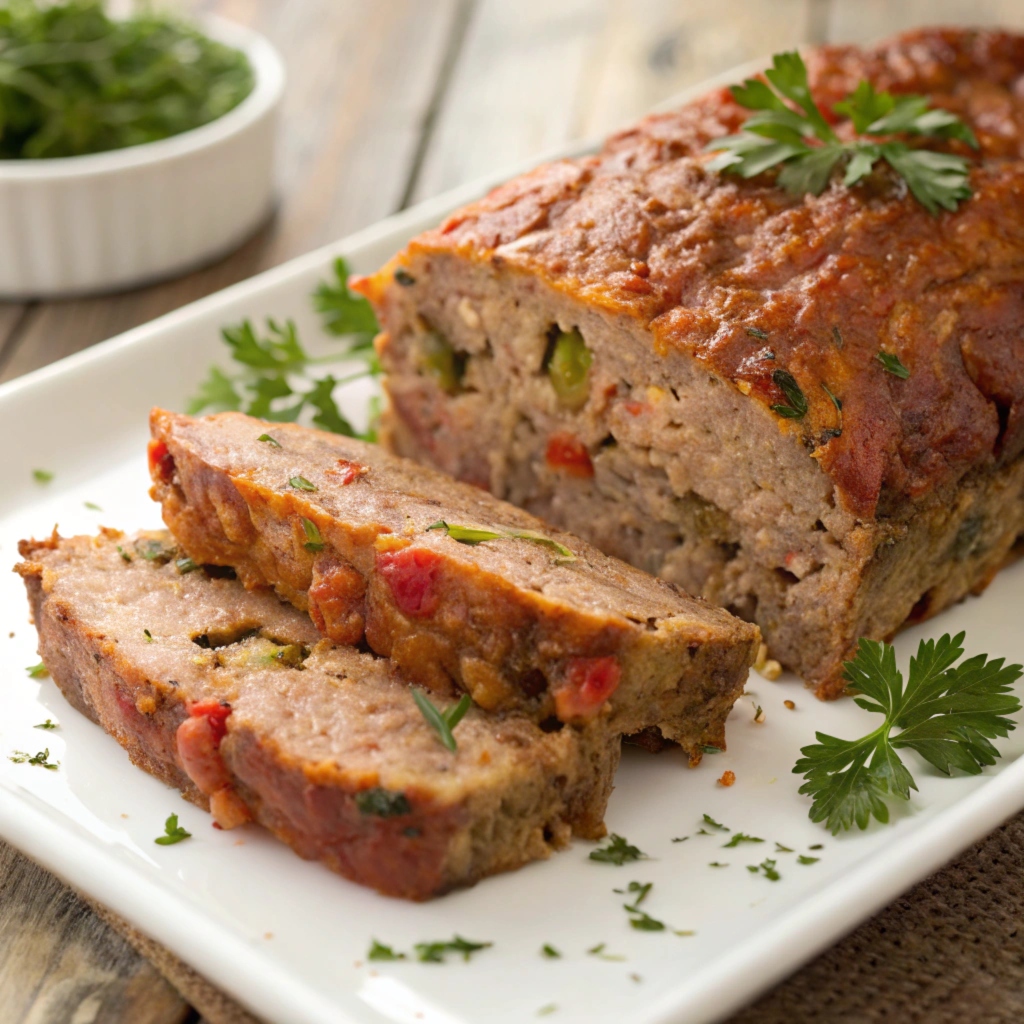When you hear the word “meatloaf,” what comes to mind? For many of us, it’s a comforting dish from childhood—a warm slice served with mashed potatoes and a drizzle of gravy. But if you’re following a kidney-friendly diet, you might think meatloaf is off-limits. The good news? It doesn’t have to be! Let’s dive into a delicious, kidney-friendly ground beef meatloaf recipe that’s both satisfying and easy on your kidneys.
Why Choose a Kidney-Friendly Meatloaf?
Living with kidney disease or trying to maintain kidney health means making some adjustments to your diet. Foods high in sodium, potassium, and phosphorus are often limited. So why a kidney-friendly meatloaf? It allows you to enjoy a hearty, protein-packed dish while keeping an eye on those pesky nutrients.
“A kidney-friendly meatloaf isn’t just a meal—it’s a way to enjoy comfort food without compromising your health.”
Table of Contents
Understanding Kidney-Friendly Diets
Kidney-friendly diets focus on keeping essential nutrients in balance. For example:
- Low Sodium: Too much sodium can strain the kidneys, leading to fluid retention and high blood pressure.
- Controlled Protein: Protein is vital, but in moderation, as it produces waste that kidneys need to filter.
- Low Potassium and Phosphorus: These minerals, when excessive, can harm kidney health.
By tailoring recipes like meatloaf, you can enjoy the flavors you love while keeping your kidneys happy.
Common Ingredients to Avoid for Kidney Health
When making a kidney-friendly meatloaf, it’s essential to avoid:
- High-Sodium Ingredients: Canned soups, regular soy sauce, or processed breadcrumbs.
- Phosphorus-Heavy Additions: Cheese, milk, or certain processed meats.
- Potassium-Laden Vegetables: Tomatoes or potatoes in excess.
Instead, we’ll use alternatives that are equally delicious but kidney-safe. Don’t worry—you won’t miss out on flavor!
Benefits of Ground Beef for Kidney-Friendly Meals
Why use ground beef? It’s an excellent source of high-quality protein, easy to digest, and versatile. When choosing ground beef:
- Opt for lean or extra-lean ground beef to reduce saturated fat.
- Grass-fed beef can offer higher omega-3 content and a better nutrient profile.
Ingredients for Kidney-Friendly Ground Beef Meatloaf

Here’s what you’ll need for this recipe:
| Ingredient | Quantity | Notes |
|---|---|---|
| Lean Ground Beef | 1 lb | Protein-rich, lower in fat |
| Low-Sodium Bread Crumbs | 1/2 cup | For structure, easy to find or make |
| Egg Whites | 2 | Binder without extra phosphorus |
| Unsweetened Applesauce | 1/4 cup | Adds moisture without potassium |
| Onion Powder | 1 tsp | For flavor without the sodium |
| Garlic Powder | 1 tsp | Adds depth of flavor |
| Parsley (Fresh or Dry) | 2 tbsp | For a herby freshness |
| Low-Sodium Ketchup | 2 tbsp | Topping for classic taste |
Substitutions for Flavor and Texture
Want to tweak the recipe? Try these swaps:
- Replace breadcrumbs with rolled oats for a gluten-free option.
- Use a splash of lemon juice instead of ketchup for a tangy glaze.
- Add grated zucchini (peeled to reduce potassium) for extra moisture.
Nutritional Profile of Kidney-Friendly Meatloaf
| Nutrient | Per Serving |
|---|---|
| Calories | 220 |
| Protein | 18g |
| Sodium | 190mg |
| Potassium | 200mg |
| Phosphorus | 150mg |
This balanced profile ensures a guilt-free indulgence!
Step-by-Step Recipe
Now, let’s get into the fun part—making your kidney-friendly ground beef meatloaf! Cooking this recipe is straightforward, even if you’re a beginner. Just follow these steps, and you’ll have a moist, flavorful meatloaf ready to impress your family and friends.
1. Preparing the Ingredients
Before you start, gather all your ingredients. Proper preparation ensures smooth cooking without last-minute surprises.
- Measure Your Ingredients: Use a kitchen scale or measuring cups to ensure accuracy, especially with seasonings and liquids.
- Preheat Your Oven: Set your oven to 350°F (175°C). This temperature ensures even cooking.
- Prepare Your Loaf Pan: Lightly grease a loaf pan with a kidney-friendly cooking spray or line it with parchment paper for easy cleanup.
“Prepping your ingredients ahead of time is like laying out the pieces for a puzzle—it just makes everything easier!”
2. Mixing and Seasoning
The magic happens when all the ingredients come together. Here’s how to get that perfect texture and flavor:
- In a large mixing bowl, add the lean ground beef, low-sodium breadcrumbs, and egg whites.
- Add the onion powder, garlic powder, and parsley. If you’re using fresh parsley, chop it finely for even distribution.
- To keep the meatloaf moist, mix in the unsweetened applesauce. This is a game-changer—applesauce locks in moisture and adds a subtle sweetness.
- Use your hands (clean, of course!) or a sturdy spoon to gently mix everything together. Avoid overmixing, as it can make the meatloaf dense.
3. Shaping and Assembling
Once your mixture is ready, it’s time to shape your meatloaf.
- Transfer the mixture to your prepared loaf pan. Use your hands or a spatula to press it down evenly, ensuring there are no air pockets.
- For that classic meatloaf look, smooth the top and form it into a slight dome shape.
Optional: Brush low-sodium ketchup or a homemade kidney-friendly glaze over the top for a glossy finish.
4. Cooking the Perfect Meatloaf
Cooking a meatloaf isn’t complicated, but timing is everything.
- Place the loaf pan in the center of the oven. Bake for 45–50 minutes or until the internal temperature reaches 160°F (71°C) (use a meat thermometer for accuracy).
- Once done, let the meatloaf rest in the pan for 10 minutes before slicing. This step is crucial—it allows the juices to redistribute, preventing a dry meatloaf.
Pro Tip: “Use an oven thermometer if you’re unsure about your oven’s accuracy. It’s the secret weapon for perfect baking!”
5. Serving Suggestions
Serve your kidney-friendly meatloaf with a variety of sides to complete the meal. Here are a few kidney-friendly options:
- Steamed Green Beans: Low in potassium and packed with fiber.
- Mashed Cauliflower: A creamy alternative to mashed potatoes.
- Cucumber Salad: Light and refreshing with a vinegar-based dressing.

Tips for Moist and Flavorful Meatloaf
Want to ensure your meatloaf is moist and flavorful every time? Here are some expert tips:
- Don’t Overwork the Meat: Gently combine the ingredients to avoid compacting the mixture.
- Add a Moisture-Rich Element: Applesauce, grated zucchini, or a splash of low-sodium broth can prevent dryness.
- Rest After Baking: This step can’t be skipped—it’s the key to juicy slices.
“Think of resting your meatloaf like letting a cake cool—it’s a little patience that pays off big time.”
Common Problems and Solutions
Even the best cooks run into challenges. Here’s how to troubleshoot common meatloaf problems:
Problem 1: Dry Meatloaf
- Cause: Overbaking or using lean meat without adding moisture.
- Solution: Incorporate moisture-rich ingredients like applesauce or grated zucchini, and never skip the resting step.
2: Meatloaf Falls Apart
- Cause: Not enough binding ingredients (like eggs or breadcrumbs).
- Solution: Stick to the recipe’s proportions and avoid cutting back on the eggs or breadcrumbs.
3: Bland Flavor
- Cause: Under-seasoning or skipping aromatics like garlic and onion powder.
- Solution: Add fresh herbs like parsley or a sprinkle of kidney-friendly spices such as paprika.
Enhancing Flavor Without Overloading Sodium
A kidney-friendly diet doesn’t mean bland food. You can pack your meatloaf with flavor using these tricks:
- Herbs and Spices: Fresh parsley, oregano, or thyme can elevate the dish.
- Acidic Elements: A splash of lemon juice or a dash of vinegar can brighten flavors without salt.
- Umami Boosters: Low-sodium soy sauce or nutritional yeast can add depth to the flavor.
“Seasoning is like painting a canvas—you want layers of flavor, not just a single brushstroke.”
Tips for Storing and Reheating Meatloaf
Once you’ve enjoyed your kidney-friendly meatloaf fresh out of the oven, you might find yourself with leftovers. Lucky you! Properly storing and reheating your meatloaf can make it just as delicious the second (or even third) time around. Let’s dive into how you can preserve its flavor and texture without compromising its kidney-friendly attributes.
Proper Storage Techniques
Whether you’re storing your meatloaf for tomorrow’s lunch or freezing it for a rainy day, here’s how to keep it fresh:
- Refrigeration:
- If you’re planning to eat the leftovers within 3–4 days, store them in the fridge.
- Wrap the meatloaf tightly in plastic wrap or aluminum foil, or place it in an airtight container to prevent it from drying out.
- Freezing:
- For longer storage (up to 3 months), freeze individual slices or the entire loaf.
- Wrap the meatloaf in plastic wrap, then place it in a freezer-safe bag or container to prevent freezer burn.
- Label the package with the date to track its freshness.
“Freezing your meatloaf in individual slices makes it easy to grab just what you need for a quick meal!”
Reheating Without Drying Out
Reheating meatloaf can be tricky—it’s easy to dry it out. But with these methods, your leftovers will taste as good as new:
- In the Oven:
- Preheat your oven to 300°F (150°C).
- Place the meatloaf in an oven-safe dish and cover it with aluminum foil to retain moisture.
- Heat for 20–25 minutes, or until warmed through.
- In the Microwave:
- Place a slice of meatloaf on a microwave-safe plate.
- Cover it with a damp paper towel to lock in moisture.
- Heat on medium power for 1–2 minutes, checking periodically.
- On the Stovetop:
- Heat a nonstick skillet over low heat.
- Add a splash of low-sodium broth or water to the pan and cover it with a lid.
- Heat for 5–7 minutes, flipping halfway through.
“Think of reheating as refreshing your leftovers—low and slow is the way to go!”
Common Problems When Reheating Meatloaf
Problem 1: Meatloaf Turns Tough
- Cause: Reheating at too high a temperature or for too long.
- Solution: Use gentle heat and cover the meatloaf to prevent moisture loss.
Problem 2: Uneven Heating
- Cause: Using high heat in the microwave.
- Solution: Heat in short bursts and rotate the plate for even warming.
Final Thoughts on Storage and Reheating

Proper storage and reheating techniques ensure your kidney-friendly ground beef meatloaf stays delicious even after a few days. Remember to refrigerate or freeze promptly, and always reheat with care to preserve that tender, juicy texture.
Creative Variations on the Recipe
Now that you’ve mastered the classic kidney-friendly ground beef meatloaf, why not have some fun with variations? By tweaking a few ingredients, you can create exciting new flavors while staying kidney-conscious. Here are some ideas to inspire your next loaf:
1. Southwest Kidney-Friendly Meatloaf
Add a touch of the Southwest with these tweaks:
- Substitute parsley with cilantro for a fresh, citrusy kick.
- Mix in a small amount of low-sodium salsa for moisture and flavor.
- Add a pinch of cumin and smoked paprika to give it a smoky edge.
Serve with a side of kidney-friendly guacamole (made with minimal salt and lemon juice instead of lime) for a Tex-Mex twist!
2. Italian-Inspired Meatloaf
Channel Italian flavors while keeping it healthy:
- Replace ketchup with a low-sodium marinara sauce as a glaze.
- Add dried oregano, basil, and thyme to the meat mixture.
- Serve with a side of zucchini noodles tossed in olive oil and garlic.
3. Veggie-Packed Meatloaf
Boost your veggie intake without overloading on potassium:
Suitable Toppings and Sides for Kidney Health
Pairing your meatloaf with kidney-friendly sides can elevate the meal into a full-fledged feast. Here are some ideas:
- Low-Potassium Veggies: Steamed green beans, asparagus, or roasted cauliflower.
- Flavorful Toppings: A light drizzle of kidney-friendly gravy or a dollop of low-sodium ketchup.
- Creative Sides: Mashed cauliflower for a creamy texture or cucumber salad for a refreshing crunch.
Tips for Adapting to Kidney-Friendly Cooking
Making dietary changes can be overwhelming, but it’s all about perspective. Here are some quick tips for adjusting to a kidney-friendly lifestyle:
- Start Small: Swap out one ingredient at a time, like choosing low-sodium options.
- Experiment with Herbs and Spices: These are your best friends for flavor without adding sodium.
- Plan Ahead: Preparing meals in advance reduces stress and ensures you always have a healthy option ready.
“Think of your kitchen as a lab—experiment, have fun, and discover flavors you love.”
Summary of Key Points
To wrap things up, here’s what we’ve covered in this ultimate guide to kidney-friendly ground beef meatloaf:
- Understanding Kidney-Friendly Ingredients: Avoid high-sodium, potassium, and phosphorus foods while using creative substitutions.
- Perfecting the Recipe: From preparation to cooking, mastering each step ensures a tender, flavorful loaf.
- Solving Common Issues: Troubleshooting dry texture or bland flavor makes every batch better.
- Storage and Reheating: Proper techniques keep leftovers fresh and delicious.
- Variations and Creativity: Experimenting with themes like Southwest or Italian keeps meals exciting.
More Ideas
Looking to expand your culinary repertoire beyond kidney-friendly meatloaf? Here are some creative ideas to inspire you to make meals that are just as flavorful and satisfying while adhering to dietary needs. These suggestions focus on versatility, innovation, and health-conscious twists that can pair well with your kidney-friendly diet.
1. Explore Kidney-Friendly Meat Alternatives
If you loved this ground beef meatloaf, you might want to try other meat alternatives that work well in kidney-friendly recipes:
- Ground Turkey or Chicken Meatloaf: Swap ground beef for lean turkey or chicken for a lighter option. Check out this article for tips on cooking ground chicken.
- Vegetarian Lentil Loaf: Lentils can be used as a base for a hearty, kidney-conscious loaf. Be mindful of potassium levels and portion size.
2. Kidney-Friendly Sides and Pairings
Complement your meatloaf with creative side dishes that align with kidney health:
- Mashed Cauliflower: A low-potassium substitute for mashed potatoes that’s creamy and delicious.
- Roasted Vegetables: Stick to kidney-safe options like bell peppers, green beans, and zucchini.
- Cucumber and Dill Salad: Light and refreshing, this pairs perfectly with the rich flavor of meatloaf.
For more ideas, visit this article on pairing pastalaya with dinner.
3. Creative Uses for Leftovers
Turn your leftover meatloaf into exciting new meals:
- Meatloaf Sandwiches: Layer cold slices of meatloaf between low-sodium whole-grain bread with fresh lettuce and a smear of mustard.
- Meatloaf Crumbles: Break up the meatloaf and use it as a topping for baked zucchini boats or as a filling for kidney-friendly wraps.
Learn quick tips for reusing ingredients creatively in this article.
4. Experiment with Kidney-Friendly Sauces
The right sauce can elevate your meatloaf to the next level. Here are some kidney-friendly options to try:
- Homemade Low-Sodium Gravy: Use a base of low-sodium broth, thickened with cornstarch.
- Herb-Infused Yogurt Sauce: Mix unsweetened Greek yogurt with fresh parsley, dill, and a squeeze of lemon for a refreshing dip.
If you’re looking for sauce inspiration, check out this guide to jazzing up meals.
5. Dessert Pairings for a Kidney-Friendly Meal
Round out your meatloaf dinner with a dessert that’s just as thoughtful:
- Almond Flour Cookies: Low in phosphorus and full of nutty flavor. Learn the tricks of baking with almond flour here.
- Fresh Berry Parfait: Layer fresh berries with unsweetened whipped cream for a light, kidney-safe dessert.
Conclusion
Kidney-friendly cooking doesn’t have to mean sacrificing flavor, variety, or satisfaction. This ground beef meatloaf recipe proves that comfort food can align with dietary needs, delivering a delicious and nourishing meal that’s easy on the kidneys. Whether you’re preparing it for yourself, a loved one, or as part of a family dinner, this recipe ensures that everyone at the table can enjoy a slice of home-cooked goodness.
From the step-by-step preparation to creative variations and storage tips, this guide equips you with the tools to make the perfect kidney-friendly meatloaf every time. And with the added ideas for sides, toppings, and even desserts, you have all the inspiration you need to create a well-rounded, satisfying meal that supports kidney health.
“Cooking isn’t just about following recipes—it’s about creating joy and connection through food. So, roll up your sleeves, try new variations, and make this kidney-friendly meatloaf your own!”
Take pride in knowing that each ingredient and technique you use contributes to both great taste and better health. Here’s to embracing kidney-friendly cooking, one flavorful dish at a time! 🍽️
